Deadliest snakes in the world
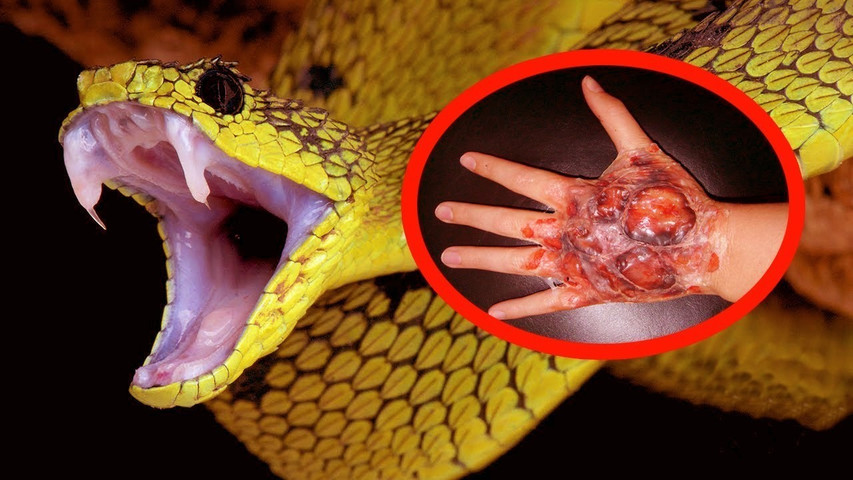 This article is about some of the deadliest snakes in the world which are big, dangerous, and venomous.
Here in this article, we will talk about the deadliest snakes in the world, which encounter most human deaths. Earth is the residence of more than about 3,500 species. These habitats are not all the venomous ones about 600 or so have the venoms. It’s a bit difficult to classify these most venomous snakes as per their danger but not inconceivable. Some of the deadliest snakes in the world whose venoms bring human life to an end are mentioned in some of its descriptions. These deadliest snakes in the world have a toxic substance in their salivary gland, which is injected into the prey body when they are aggressive by biting them. These venoms could cause inflammation, swelling, immobility, bleeding of external and internal organs, and hemorrhage, which often results in death.
This article is about some of the deadliest snakes in the world which are big, dangerous, and venomous.
Here in this article, we will talk about the deadliest snakes in the world, which encounter most human deaths. Earth is the residence of more than about 3,500 species. These habitats are not all the venomous ones about 600 or so have the venoms. It’s a bit difficult to classify these most venomous snakes as per their danger but not inconceivable. Some of the deadliest snakes in the world whose venoms bring human life to an end are mentioned in some of its descriptions. These deadliest snakes in the world have a toxic substance in their salivary gland, which is injected into the prey body when they are aggressive by biting them. These venoms could cause inflammation, swelling, immobility, bleeding of external and internal organs, and hemorrhage, which often results in death.
Inland taipan:
The inland taipan is the most poisonous snake found on earth. You will find the inland taipan in floodplains of Queensland and South Australia, mostly living in remote areas than in coastal areas. They are habited in tucked away cracking clay, cervices, deep holes, and the mammal’s burrows. According to the Internal Journal of Neuropharmacology, a small bit of this venomous snake has the potential to kill the victim. It is reported that Inland taipan avoids confrontation and it rarely comes in contact with a human. Its color changes seasonally, it ranges from dark hue tan color to brownish light green. The neck color of this venomous snake is darker than its body color. This round-snouted head snake when feels threatened, before darting out first coils itself in an s-shape and then prey. The thing, which makes part of this most dangerous snake in the world from others, is the hyaluronidase enzyme. This enzyme, speed up the absorption rate of the venom in the prey body.
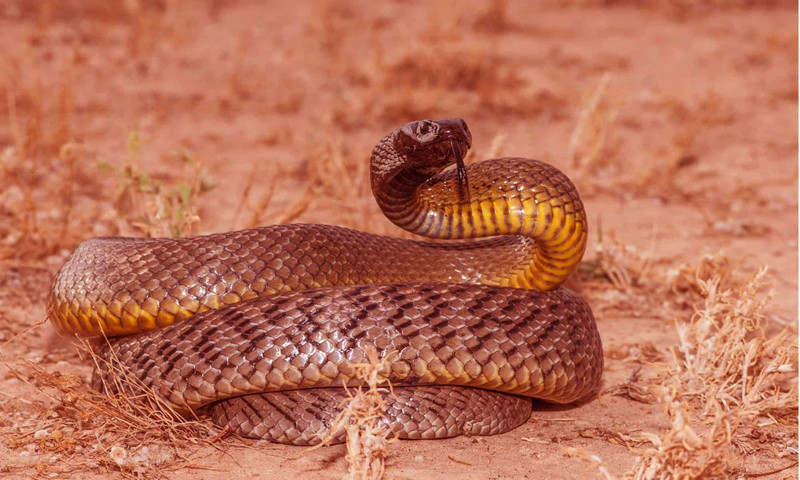
Coastal taipan:
Coastal snakes are the second-longest poisonous snakes described by Wilhelm Peters in 1867. The deadliest snakes in the world have a quick defensive response against the threat. When it feels any kind of disturbance or threat it rapidly responds to it to secure itself from the threat and has an incredible speed. While preying it first suddenly lifts its body from the ground and then attacks its prey to insert the venom into its body. Coastal snakes are found on the island of New Guinea and in northern and eastern Australia. The head of the coastal taipan is bigger than the rest of the body

King cobra:
King cobra is the longest most poisonous snake. This deadliest snake can grow up to 18 ft long. When we think of the deadliest venomous longest snakes the king cobra is often the one that slithers to our mind. As a response to the threat, it lifts its body straight from the ground by extending its hood and starts to make a sharp sibilant sound. New York time wrote that the most deadly snake eat other snakes also and its bite can kill an elephant in a few hours and a human in 15 minutes it’s that venomous.
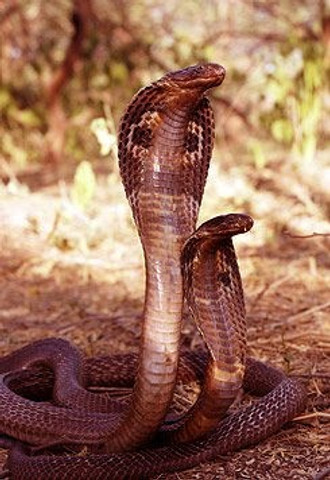
Banded krait:
The banded krait is a highly venomous snake that is found in the Indian Subcontinent and Southeast Asia. It either moves slow or hides in daytime but at night one should be careful because it's a night hunter. The venom of this dangerous snake is neurotoxic and paralysis the muscles of the prey and stops the movement o the diaphragm and the air entrance to the lung which result in suffocation. It can be identified by its vertebral scale enlarged along its body and has the black and yellowish color alternate cross bands. On average it could grow up to 3-4 ft. it resists biting until and unless it is provoked persistently.
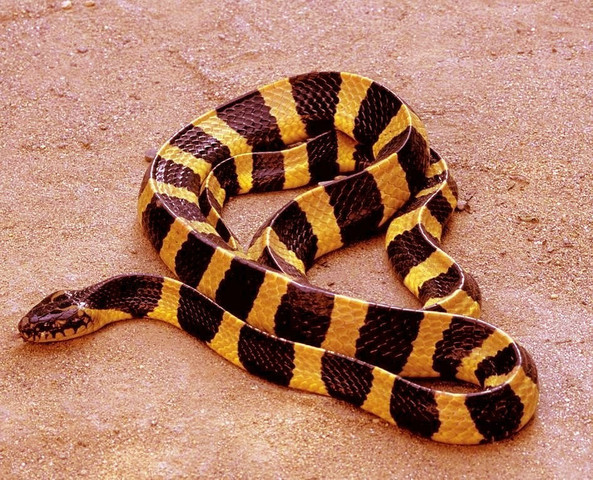
Boomslang:
Boom means” tree” and slang means “snake”, which is simply called by the native of Africa the tree snakes. They are excellent climbers and most can be found in forested areas. The eyes of these snakes are quite big and have egg-like shaped heads. The color of boomslang varies but mostly female snakes are born with a brownish color and male snakes exhibit more vibrant colors. The nasty bit of these venomous snakes spreads the hemotoxin in the prey's body and it kills it very unpleasantly with internal and external bleeding. Its venom can lead to internal bleeding from the eyes, lungs, kidneys, heart, and brain.
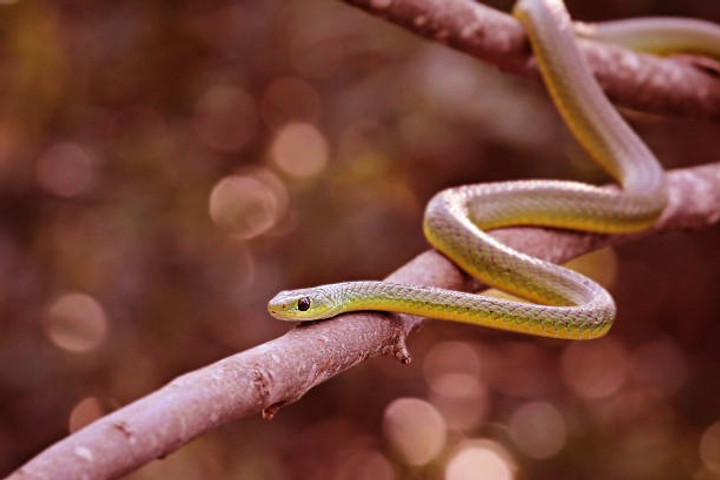
Saw-scaled viper:
Saw-scaled viper is the smallest and most venomous snake of the four big venomous snakes responsible for the most death due to its bites. A wide range of these snakes is living throughout the Middle East and Southeast Asia. It has rounded short snot with a distinct head from the neck. This bad-tempered poisonous snake has fatal venom. If its viper once bites someone then that area gets swell and a person feels pain in that area which has the potential to result in hemorrhage. According to the researchers, most of the death is reported due to the prey of these nocturnal hunters.
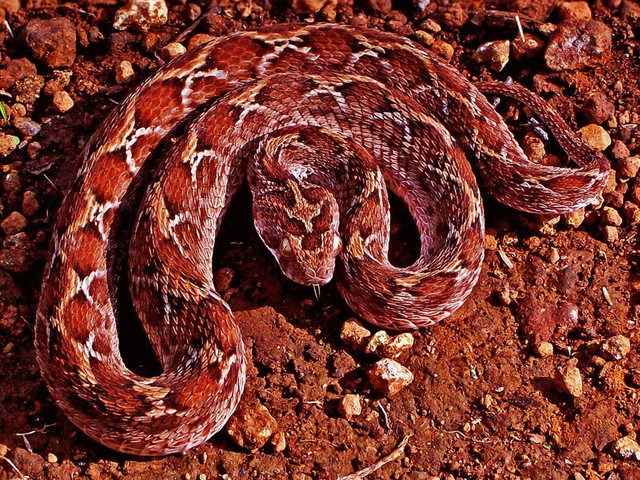
Black Mamba:
Black Mamba is described more as nervous than aggressive but it can prove this description meaningless if one provokes it. This deadliest snake is smaller than a cobra in size but is faster than it. This deadliest snake can chase along more than 12 miles in an hour be careful before messing with it. If any unlucky or foolish provost then he/she just endangered their own life because this snake will chase them. A potent neurotoxin is present in its venom and only a couple of drops are enough for killing a person. The skin color of these venomous snakes ranges from grey to light brown.
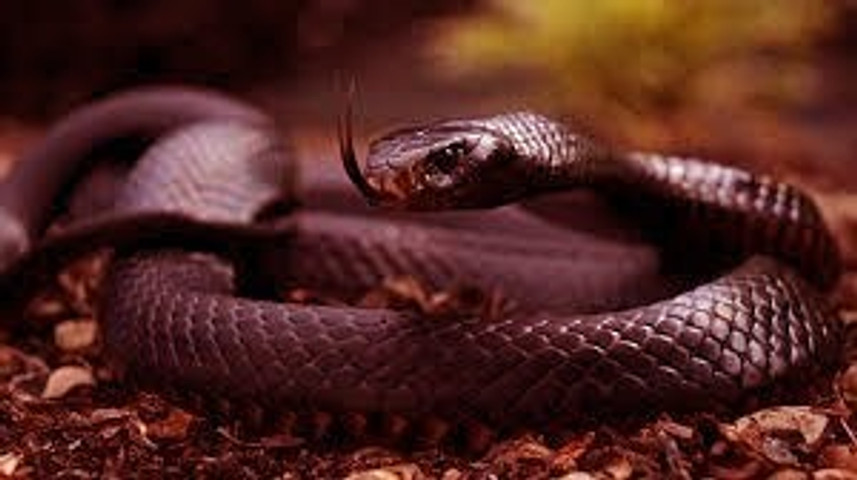
Olive Sea Snake:
Olive Sea Snakes have a quite dangerous combination, they are more curious than aggressive. They are both friendly as well as venomous. They rarely became aggressive and bite a human but when it bites it's fatal. These are the water-loving snakes and their skin inspires their name.







